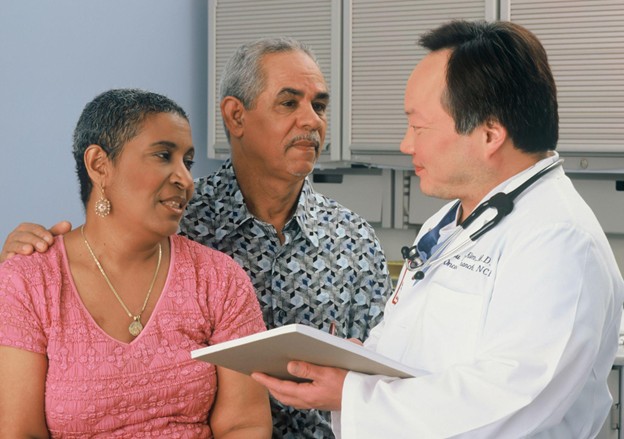
Interdisciplinary collaboration in healthcare sets the stage for better results across the board. When doctors, nurses, pharmacists, and therapists work together, they build stronger safety nets for patients. This collective approach raises the standard of care, reduces errors, and creates a safer environment for those who need it most.
By pooling their knowledge and playing to each other’s strengths, teams can spot issues faster and adapt treatment more effectively. Respected physician, Dr. Christopher Driskill, breaks down why working together works so well, how it drives success, and how every patient feels the benefit.
Foundations of Interdisciplinary Collaboration in Healthcare
Interdisciplinary collaboration means different health professionals working as one team, each bringing their own skills to the patient’s bedside. Doctors make diagnoses and direct treatment plans, while nurses handle daily care, observe changes in condition, and keep families informed. Pharmacists keep medicines safe and effective, double-checking prescriptions for errors and possible side effects.
Physical, occupational, and speech therapists help patients regain function, set recovery goals, and train families to support therapy at home. Dietitians share nutrition advice that shapes recovery and helps prevent setbacks. Every professional plays a unique role. For example, in stroke rehabilitation, a doctor sets the overall strategy, a nurse handles the care routine and monitors progress.
Meanwhile, a physical therapist helps with movement, and a speech therapist works on communication. A pharmacist reviews each drug for safety, while a dietitian adjusts meals to support healing. Each expert views the patient through their own lens, but when those perspectives join up, the patient gets a care plan tailored to their needs.
“Mutual respect stands at the center of collaboration,” says Dr. Christopher Driskill. “Each team member trusts the knowledge and judgment of others, which leads to open conversations.”
Open communication means everyone speaks up about changes, concerns, or ideas. Errors shrink when teams share information early and act fast. Shared decision-making builds trust across roles. Instead of following a top-down order, teams listen to each professional and adjust plans together. This method puts the patient at the heart of every step.
Patients feel safer, and families sense that care is thoughtful and complete. Stronger teamwork brings concrete benefits. When everyone shares responsibility, the pressure does not fall too hard on any one person. When issues arise, solutions come from several minds. This approach turns a group of individuals into a true team.
Each profession carries a set of duties that shape patient care in distinct ways. Physicians take the lead in diagnosis and set the treatment goals, yet they depend on nurses for close monitoring and reporting subtle changes. Nurses often spot early warning signs that help prevent complications.
Pharmacists ensure that medicines do not cause harm. They screen for drug interactions and teach both patients and staff about side effects. Their checks and advice help limit hospital-acquired problems tied to medication use.
Therapists, whether physical, occupational, or speech, step in soon after diagnosis. In stroke care, for instance, they start with small, safe tasks. By working with the rest of the care team, they build a plan that fits the patient’s current abilities and goals for recovery.
Dietitians shape meal plans to speed healing and manage chronic conditions like diabetes or heart disease. Their input can keep patients from ending up back in the hospital.
Social workers connect patients to outside resources, arrange follow-up visits, and solve social issues that block recovery. With their support, families get guidance on what to expect after discharge.
Together, these professionals unite their unique skills, filling gaps that any single role might leave open.
Impact of Interdisciplinary Collaboration on Patient Outcomes
Current research shows that teams working as one reduce errors, support better decisions, and raise patient satisfaction. Data supports the idea that hospital stays get shorter when collaboration increases, saving both money and stress for patients and families.
For chronic diseases such as heart failure or diabetes, ongoing teamwork keeps conditions stable and cuts down on emergency visits,” notes Dr. Driskil.
Hospitals with strong interdisciplinary teams rarely see the same preventable errors and infections that others face. This success shows up in national reports and hospital rankings, where teams that share responsibility post better scores on safety and recovery.
When teams break down traditional barriers, they catch mistakes early. Nurses, doctors, and pharmacists review each other’s work. For example, before surgery, a team meets to review every detail. The patient’s history, medication, allergies, and planned procedures. After surgery, therapists join rounds and point out any changes that might affect recovery.
Pharmacists often spot overdoses or risky drug combinations before they reach the patient. Nurses notice a subtle change in speech that signals a new stroke, even before a doctor can order new tests. Small details, when shared early, stop big problems before they begin.
Continuous team monitoring also helps patients who have complex needs. In critical care, multiple professionals round together, making adjustments in real time. This reduces missed warning signs and ensures that every angle is covered.
Patients see the difference when their care team works as one. Personalized plans get more attention when each discipline weighs in, making care fit the individual instead of the average. When everyone is looped in, patients spend less time waiting for answers. Nurses and therapists explain treatments in plain language, building trust and easing anxiety.
“When patients and families feel heard, satisfaction rises,” says Dr. Driskill.
Research backs this up: those who receive coordinated care often score their experiences higher in follow-up surveys. They know who to ask for help and feel at home in the care process. Communication between the team and the patient bridges knowledge gaps.
For chronic illness, teams that share information stop small problems from turning into emergencies. Frequent check-ins with pharmacists prevent drug side effects, while therapists’ ongoing feedback keeps recovery on track. Dietitians help patients adapt meals at home, giving them more control over their health. These efforts mean the care plan is always current, backed by expert review, and responsive to what the patient really needs.
Interdisciplinary collaboration is a proven way to raise care standards and strengthen patient outcomes. When teams of professionals respect each other, share information, and work toward shared goals, every interaction supports healing, safety, and comfort. This approach cuts errors, shortens stays, reduces costs, and helps patients feel supported.
Every healthcare setting can benefit from a team-based approach and should make collaboration a standard part of patient care. By valuing teamwork, healthcare professionals give each patient a better chance, one caring, connected step at a time.






